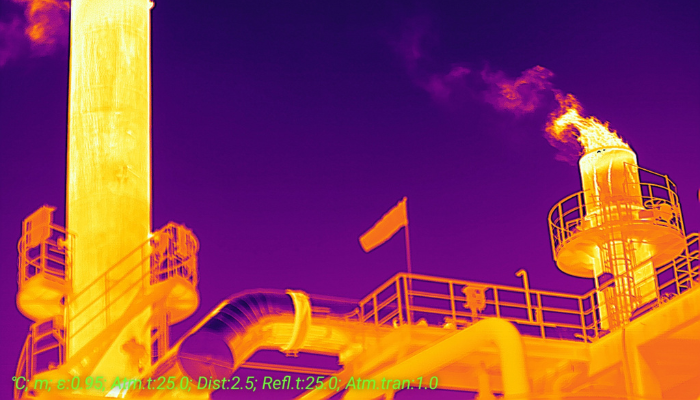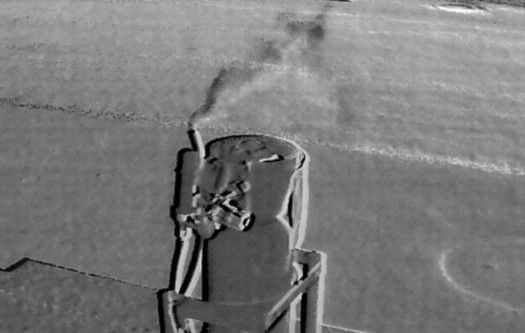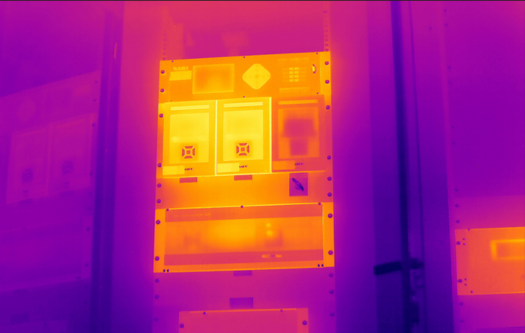In the pursuit of more sustainable industrial practices, infrared thermal cameras have emerged as critical tools for driving energy saving and improving efficiency. These devices use advanced thermal imaging technology to detect heat emissions, providing insights that help industries optimize energy usage and reduce waste. As companies increasingly align with ESG (Environmental, Social, and Governance) principles, infrared cameras offer a direct path to lowering their carbon footprint.
By identifying potential energy inefficiencies, thermal cameras play a vital role in reducing greenhouse gas emissions, a key component of modern ESG strategies. This technology helps businesses monitor energy consumption in real-time, ensuring that energy-saving measures are implemented proactively.

Energy Efficiency through Early Detection of Heat Loss
One of the primary ways infrared thermal cameras contribute to energy conservation is through the early detection of heat loss in various systems. Whether used in industrial settings, commercial buildings, or residential applications, thermal imaging helps identify areas where insulation might be compromised or machinery is operating inefficiently. Such insights allow companies to address these issues before they escalate, resulting in significant energy savings.
By detecting hotspots in real-time, businesses can take timely action to reduce energy waste, which normally help extend the lifecycle of equipment and improve operational efficiency. This approach not only helps save energy but may also reduce the occurrence of costly repairs, supporting broader sustainability goals.

The Role of Thermal Cameras in Reducing Carbon Emissions
Another significant aspect of thermal imaging technology is its ability to reduce carbon emissions. As industries strive to meet global carbon reduction targets, infrared thermal cameras enable more accurate monitoring of processes that emit greenhouse gases such as SF6. By optimizing these processes, companies can effectively manage their environmental footprint.
Thermal cameras can also assist in predictive maintenance, helping ensure systems run efficiently, which plays a positive role in minimizing emissions. As a result, companies can better manage their energy resources, contributing to the global effort to combat climate change.

Supporting the “S” in ESG
While the environmental benefits of infrared thermal cameras are clear, their contributions to the other elements of ESG should not be overlooked. In terms of "Social," these cameras enhance workplace safety by identifying potential hazards, such as overheating machinery or electrical components. By addressing these risks early, companies can protect employees from harm while minimizing downtime.
Infrared thermal imaging provides better tools for transparency in energy consumption, helping companies meet relevant compliance standards and better report on their sustainability initiatives. The data provided by these cameras can be used to demonstrate responsible energy management practices to stakeholders, boosting corporate credibility in the market.

Applications of Infrared Thermal Cameras in Energy-Intensive Industries
Industries such as manufacturing, oil and gas, and construction, which typically have high energy demands, benefit significantly from thermal imaging technology. In manufacturing, thermal cameras help monitor machinery for overheating, reducing the likelihood of energy-intensive breakdowns. Similarly, in construction, these cameras detect leaks and ensure proper insulation, reducing energy waste in buildings.
The widespread adoption of infrared thermal cameras can significantly impact the energy landscape by promoting sustainable practices across sectors.

A Future of Sustainability with Infrared Thermal Cameras
As companies worldwide strive to meet their ESG goals, the adoption of infrared thermal cameras is becoming an important choice. These devices offer an effective tool for energy conservation, carbon reduction, and safety management, all of which are critical components of a sustainable future.
Through the lens of thermal imaging, companies can visualize their energy consumption, take actionable steps to reduce waste, and ensure a more sustainable and environmentally responsible operation.